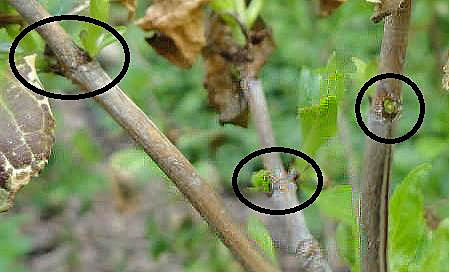Effects and Remedies for Frost Damaged Hydrangeas
by Elaine Homstad, Fairfax Master Gardener
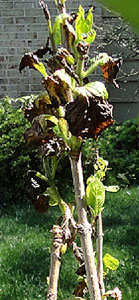
Figure 1. Damage on Hydrangea macrophylla ‘Bailmer’
According to the National Weather Service, damaging cold temperatures of 27, 24, and 25 degrees Fahrenheit were recorded at Dulles Airport from April 5 to April 10. This followed the second warmest March on record. Two days in March saw temperatures reach the 80s.
The worst damage was done to the H. macrophyllas. These are the “Bigleaf” hydrangeas, which include both mophead and lacecap varieties. They bloom on old wood, meaning they set buds on last year’s growth. The ever-blooming Endless Summer series are also included in this group, because they have a mix of both old and new wood that will set and deliver blooms.
H. quercifolia (the Oakleaf variety), although old wood bloomers, are among the hardiest of hydrangeas and, therefore, suffered little or no damage from the frost. Additionally, the climbing hydrangeas, another hardy variety, suffered no damage.
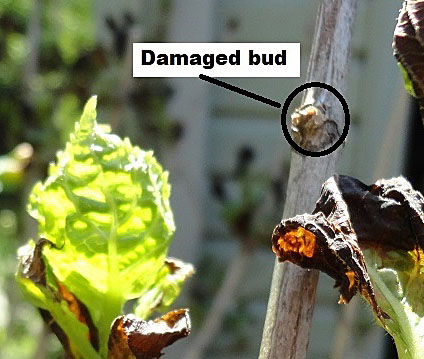
Figure 2. Damaged foliage and bud on H. macrophylla ‘Bailmer’
So now what? Should you cut back the plant to remove the damaged foliage? Will you get new growth? What about blooms? These are all heart-wrenching questions for the hydrangea-philes among us. We have some advice.
First, inspect thoroughly. You need to determine the type and extent of the damage before you pull out those pruners. You are looking particularly for both browned or blackened leaves and buds, and especially for signs of life and growth, even on damaged foliage (Figures 2, and 3).
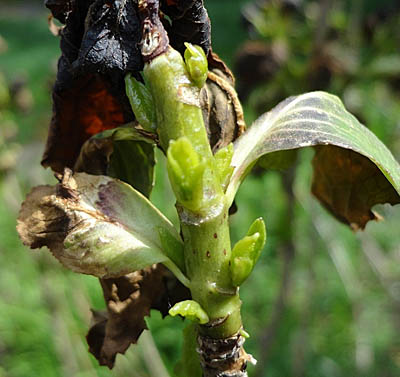
Figure 3. Damage and new growth on H. macrophylla ‘Bailmer’
Third, wait and watch. David Yost, of Merrifield Garden Center, wisely advises,
Fourth, prune carefully. If you choose to prune, ONLY remove the parts that are completely damaged, making your cut above some of the undamaged foliage or buds (figure 4). Based on the results of your inspection, you may find damaged outer leaves, but new buds lower on the plant (Figure 5). |
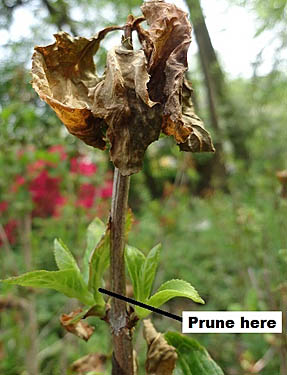
Figure 4. Prune just above the undamaged foliage
I did not cover my numerous lacecap H. macrophlla ‘Tokyo Delight’, which are in a more sheltered part of the garden. For them, most of the damage is at the top, and there is budding and new growth at the base and lower part of the branches. The bad news is that the damaged parts are not going to flower this year. It is old wood, and it set its buds last year for this year. But the good news is that I see foliage and new green buds, even though the larger more developed leaves are dead black crinkly messes, so I will leave those branches alone for now. Then, within the next 3 weeks I will be able to better assess if and where to prune.
